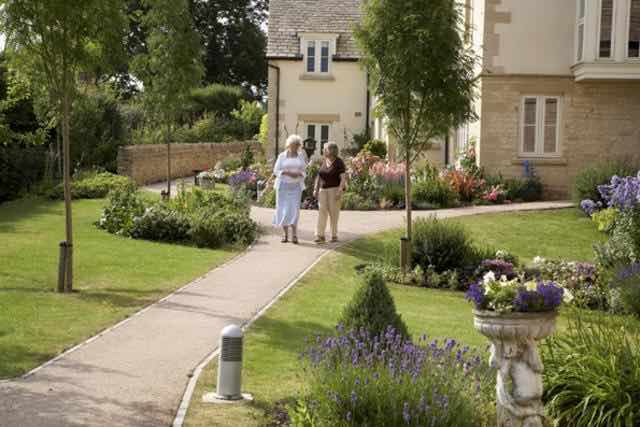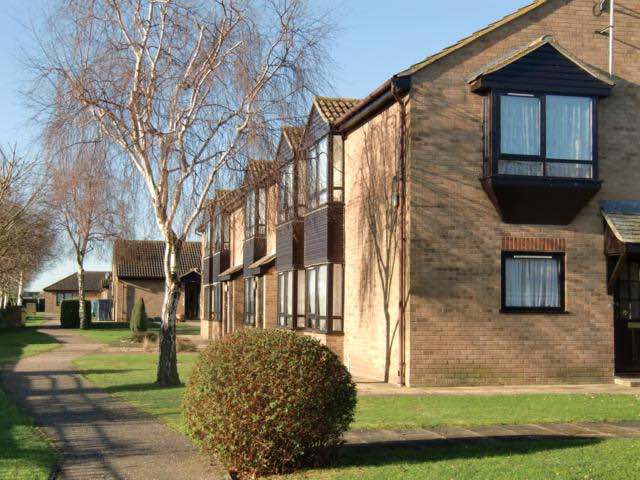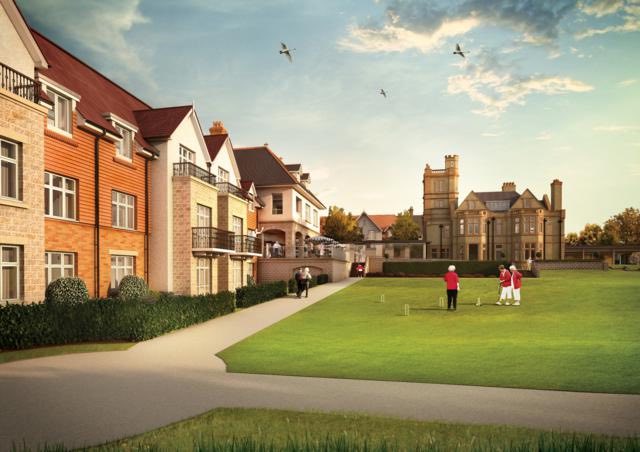Our guide to buying a retirement property
Go backPublished on Retiremove, 17th April 2017.
Buying a retirement home can be a nerve-racking business because there is so much to consider. This print-out-and-keep checklist will help you with your search
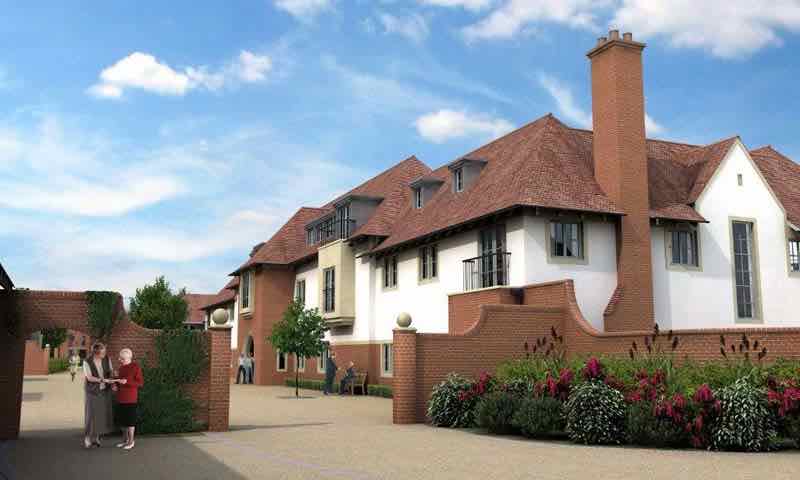
Facilities
These can range hugely depending on whether you are looking to buy a property in a top-end retirement village such as Audley Chalfont Dene (pictured above), a cottage or apartment in a small complex or a rented flat in a retirement-designated block.
Whichever property you choose you will live independently in a self-contained apartment or house. Some developments offer communal facilities, ranging from beautifully maintained gardens, tennis courts, a spa, swimming pool, restaurant, allotments, a doctor’s surgery, laundry and hairdressers.
Others may simply be a block of flats with a communal lounge area and tea and coffee making facilities. Naturally the better the facilities the higher the service charges, so work out what is important to you and, most important, whether you can afford it.

Location
If you are moving to be closer to friends or relatives remember that you may also be spending more time at home, so the view from your windows should be as important as your immediate environment. So it’s best to avoid a development by a busy road unless you like the buzz of traffic.
However you do want to be within walking distance of the shops or the bus. Choosing a development in the middle of nowhere – unless it is large enough to provide a dedicated shuttle bus/transport service – can leave you feeling isolated especially if you don’t drive.
Pictured to the right is Fleur de Lis, a retirement development from Renaissance Retirement in the centre of Christchurch in Dorset and overlooking a park.
Retirement Village Or Sheltered Housing
A village tends to be better equipped with lots of communal facilities and organised activities, so they suit people who are active and sociable. They are also better for single people because there is a ready-made social life on site. The nicest ones are within attractive market towns, close to shops, doctors surgeries and banks. If you choose sheltered housing see if there is a leisure centre or local pool nearby so you can enjoy their facilities without paying a hefty service charge and depending on your age you may benefit from a free bus pass.
Security
All retirement housing should be secure. Some are gated communities or have CCTV and/or equip each property with a telecom answering entry system. Some villages have 24-hour care staff while others have a warden on duty only during the day. Wardens help to sort out worries, put you in touch with tradesmen and may take on tasks, like watering plants while you are on holiday. For those who are less fit and not so mobile Careline offers a round-the-clock telecare monitoring service that includes a special panic pendant the resident can wear round the neck and press if they need help.
Care
People without medical problems might opt for a site for the active retired where extra care can be bought in privately, if required. But for those who are less robust a village built around a nursing home such as Retirement Villages provides may be a better option.
At the upper end of the retirement village scale Audley Retirement is registered with the Quality Care Commission which ensures the carer you invite into your home is rigorously trained and highly qualified. McCarthy & Stone, the largest retirement home developer, offers two types of accommodation: independent or assisted living. With the latter help with dressing, washing, mobility and housework can be provided.
Pictured above is Painswick Village, a luxury Richmond Villages scheme in Gloucestershire built around a cobbled courtyard. Accommodation combines independent, assisted living and full nursing care and facilities include tea rooms, restaurants, shops and a spa.
On Site Restaurant
This is a convenient and reassuring facility in that if you don’t feel like cooking you can pop to the restaurant and order a meal/or ask for one to be brought to you if you are not well. The restaurant also provides an opportunity to meet and make friends with other residents – which is guaranteed if there is a bar as well.
Social Life
Some developments have active residents’ groups organising card nights, theatre and cinema trips and guest-speaker events. You can decide whether you want to be in the swing or left alone.
Maintenance/ Service Charges
These can appear frighteningly high, but remember you will no longer have to pay for your own gardener or take care of the external maintenance of your home. Check what is covered in the maintenance charge agreement: generally your payments should cover all external lighting, the upkeep of grounds, gardens, communal spaces and buildings, window cleaning, external painting, site facilities, security, staff and building insurance.
Check whether some of the service charge goes into a sinking fund to pay for unexpected costs. You don’t want to find yourself being hit with a share of a bill to repair the roof. Look at how the service charge is calculated. Is it linked to the rate of inflation or could it rocket? Also ask for a detailed break down of the charges. Generally you are responsible for your telephone/Internet, water, gas and electricity bills and insuring and maintaining the interior of your home.
Management Companies
This is the organisation that runs the site and levies the service charge. Some are set up as not-for-profit companies. Cognatum manages retirement ‘estates’ all over the South of England. See if there is a residents association too. It is always good to keep an eye on the management companies. Some have had a bad press in recent years.
Restrictions
An age restriction of 50 to 60-plus ensures that you will not be troubled by crying babies or noisy teenagers, well most of the time anyway because of course visitors are allowed. Some retirement schemes have visitors suites which is convenient if you only have a one-bedroom apartment.
But because of the age restriction retirement-designated properties can be harder to sell, and of course the maintenance charges still have to be paid even if the property is vacant up until the day you sell. It also means that if your children hit hard times they can’t move in with you unless of course they meet the age criteria. But that could provide you with a good excuse if you don’t want them moving in!
If you are aged 80 or over it may be wiser to consider renting a property such as a one-bedroom apartments in Oak Haven, (pictured above). This scheme is in Harwich in Essex. One-beds costs from £575 per month available through Girlings. The convenience with renting is that if you should need to move into a nursing home you don’t have the hassle of selling your home or asking the local authority or bank for a loan while waiting for the money to come through.
Size
Measure your existing living room and do the same with your chosen retirement home. Some are tiny. So it is very important you do some ruthless decluttering before moving! Be prepared to buy new furnishings which may suit your new accommodation better or simply give up and splash out on a larger property such as those at Wiltshire Leisure Village.
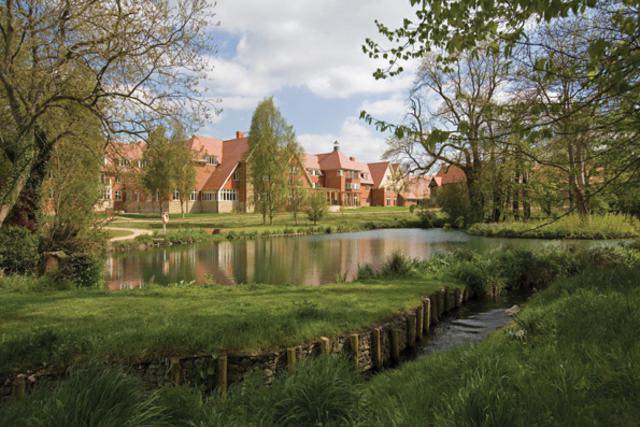
Letcombe Regis in Oxfordshire, a stunning Richmond Village which includes among its facilities a swimming pool, spa and care home.
Resale
Retirement property is a specialist market and local estate agents will probably not achieve the same price for your two-bedroom apartment as for a similar property on the open market. Having said that there is a shortage of quality retirement accommodation so providing it is in an area where there is a demand you shouldn’t have any trouble. But it is a consideration if you need to move into a nursing home and sell your home to pay for fees. Some developers like McCarthy & Stone offer a re-sales service. The Elderly Accommodation Counsel also carries details of properties for sale on its website.
Exit Fees
Some companies charge a fee of between 0.25-12.5 per cent of the property’s value when a home is resold. A new code has been introduced requiring greater transparency over these fees. Click here for more information.
Pets
If you have a pet you want to take with you check before you buy. Some sites don’t allow pets, while others allow a small cat or dog. You may be restricted on the kind of property you can move into if you have a pet (i.e. ground floor flat only). Some developments allow pets to move with you but will not permit replacements. Pictured left is Bishopstoke Park, a charming retirement community in Hampshire run by Anchor.
Facts
- By 2032 nearly one in four people in the UK will be aged 65 or over.
- There are only about 550,000 private retirement properties in the UK.
- The average age at which people move to a retirement property is 73.
- Some 60 per cent of people aged over 65 have a long-term medical condition.
Useful Websites
The Elderly Accommodation Council www.eac.org.uk
www.appello.co.uk (formerly careline)
For more information:
01491 821170
property@cognatum.co.uk
